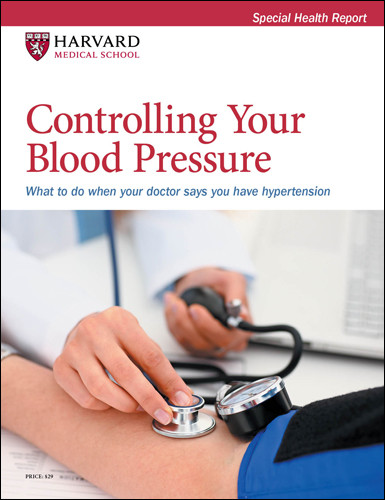Chemical pollutants: A growing concern for your heart
Lead, "forever chemicals," and pesticides may raise the risk of cardiovascular disease. Can you lower your exposure?
- Reviewed by Christopher P. Cannon, MD, Editor in Chief, Harvard Heart Letter; Editorial Advisory Board Member, Harvard Health Publishing

Contact with toxic chemicals and pollution usually conjures up concerns about cancer or neurological problems. But hazardous substances in the environment are also implicated in the nation's leading cause of death — cardiovascular disease.
"The recognition that chemical pollutants can contribute to heart disease is more recent. But it's quite real," says Dr. Philip Landrigan, adjunct professor of environmental health at Harvard's T.H. Chan School of Public Health and an affiliate in the Department of Global Health and Social Medicine at Harvard Medical School. Until recently, the risk from environmental pollution has been overshadowed by other classic heart disease risk factors, he explains.
"Cardiologists have made extraordinary progress in identifying and addressing those risks. Deaths from heart disease are far lower now than in the 1950s. But now that fewer people are smoking and more people have their cholesterol levels and blood pressure under better control, the importance of environmental exposures is getting more attention," he says.
Pollution sources
Chemical pollutants include toxins found in air, water, and soil. Of these, air pollution is the leading threat to cardiovascular health, Dr. Landrigan says (see "The heart-related hazards of air pollution" in the March 2022 Heart Letter).
Other worrisome contaminants include heavy metals (especially lead); perfluoroalkyl and polyfluoroalkyl substances, also known as PFAS; and pesticides, according to an article in the April 26, 2024, issue of Circulation Research. Where are these substances found, and how might they harm the heart?
Lead. Anyone born before the mid-1970s was exposed to lead from breathing exhaust from cars that ran on leaded gas, says Dr. Landrigan. Residue from lead paint persists in homes and other structures built before 1978, and erosion from lead pipes (mainly in homes built before 1986) can contaminate drinking water. Hobbies such as oil painting and stained glass making can also expose people to lead.
Although your body eliminates some lead through your urine, a portion of it goes into your bones, where it can stay for decades. Bone tissue constantly remodels itself, and that stored lead can be released back into the bloodstream as people age. Lead appears to promote heart disease risk by impairing kidney function, which raises blood pressure.
PFAS. Known as forever chemicals because they resist chemical and biological degradation, PFAS are commonplace in daily life: they're used to coat food and beverage packaging and other products. However, PFAS are widely used in aerospace, automotive, and other industries, and the resulting industrial waste means that PFAS often end up in our drinking water and food supply. High blood levels of these chemicals have been linked to increases in harmful LDL cholesterol and plaque buildup inside arteries.
Pesticides. Agricultural and chemical industry workers face the highest risk from these chemicals, although people living in rural agricultural areas also can be affected by pesticide spray drift. Home pesticide use to combat weeds and insects is another possible route of exposure, and people may consume pesticide residues in food.
What you can do
These steps may help:
Check your drinking water. By law, municipal drinking water suppliers must provide annual quality reports to their customers, but the water is tested before it leaves the facility. Because lead can leach into water from pipes that supply your home, testing your tap water may be prudent; the EPA provides detailed guidance. Contact your local health or environmental agency if your water comes from a private well. If your drinking water contains heavy metals, PFAS, or other contaminants, use one of the major water filter brands and be sure to replace the filter according to the instructions.
Choose PFAS-free products. Residue and dust from certain consumer products may expose people to PFAS. These include
- stain-resistant carpets, upholstery, and other fabrics
- water-resistant clothing and shoes
- cleaning products
- personal care products and cosmetics, such as shampoo, dental floss, nail polish, and eye makeup
- paints, varnishes, and sealants.
Look for the words "PFAS-free" on labels, and avoid products containing ingredients with "perfluoro" or "fluoro" in their names.
Avoid pesticides when possible. Seek alternative, non-chemical methods to manage pests at home. Consider buying organic food, especially for the foods you eat most often.
Image: © vitapix/Getty Images
About the Author

Julie Corliss, Executive Editor, Harvard Heart Letter
About the Reviewer

Christopher P. Cannon, MD, Editor in Chief, Harvard Heart Letter; Editorial Advisory Board Member, Harvard Health Publishing
Disclaimer:
As a service to our readers, Harvard Health Publishing provides access to our library of archived content. Please note the date of last review or update on all articles.
No content on this site, regardless of date, should ever be used as a substitute for direct medical advice from your doctor or other qualified clinician.
















